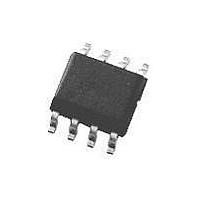LPV358MM National Semiconductor, LPV358MM Datasheet - Page 11

LPV358MM
Manufacturer Part Number
LPV358MM
Description
IC, OP-AMP, 152KHZ, 0.1V/µs, MSOP-8
Manufacturer
National Semiconductor
Datasheet
1.LPV321M5NOPB.pdf
(20 pages)
Specifications of LPV358MM
Op Amp Type
Low Power
No. Of Amplifiers
1
Bandwidth
152kHz
Slew Rate
0.1V/µs
Supply Voltage Range
2.7V To 5V
Amplifier Case Style
MSOP
No. Of Pins
8
Lead Free Status / RoHS Status
Contains lead / RoHS non-compliant
Available stocks
Company
Part Number
Manufacturer
Quantity
Price
Part Number:
LPV358MM
Manufacturer:
TI/德州仪器
Quantity:
20 000
Part Number:
LPV358MM/NOPB
Manufacturer:
NS/国半
Quantity:
20 000
Part Number:
LPV358MMX
Manufacturer:
HARRIS
Quantity:
20 000
Part Number:
LPV358MMX/NOPB
Manufacturer:
TI/德州仪器
Quantity:
20 000
Application Information
BENEFITS OF THE LPV321/358/324
Size
The small footprints of the LPV321/358/324 packages save
space on printed circuit boards, and enable the design of
smaller electronic products, such as cellular phones, pagers,
or other portable systems. The low profile of the LPV321/
358/324 make them possible to use in PCMCIA type III
cards.
Signal Integrity
Signals can pick up noise between the signal source and the
amplifier. By using a physically smaller amplifier package,
the LPV321/358/324 can be placed closer to the signal
source, reducing noise pickup and increasing signal integrity.
Simplified Board Layout
These products help you to avoid using long pc traces in
your pc board layout. This means that no additional compo-
nents, such as capacitors and resistors, are needed to filter
out the unwanted signals due to the interference between
the long pc traces.
Low Supply Current
These devices will help you to maximize battery life. They
are ideal for battery powered systems.
Low Supply Voltage
National provides guaranteed performance at 2.7V and 5V.
These guarantees ensure operation throughout the battery
lifetime.
Rail-to-Rail Output
Rail-to-rail output swing provides maximum possible dy-
namic range at the output. This is particularly important
when operating on low supply voltages.
Input Includes Ground
Allows direct sensing near GND in single supply operation.
The differential input voltage may be larger than V
damaging the device. Protection should be provided to pre-
vent the input voltages from going negative more than −0.3V
(at 25˚C). An input clamp diode with a resistor to the IC input
terminal can be used.
CAPACITIVE LOAD TOLERANCE
The LPV321/358/324 can directly drive 200 pF in unity-gain
without oscillation. The unity-gain follower is the most sensi-
tive configuration to capacitive loading. Direct capacitive
loading reduces the phase margin of amplifiers. The combi-
nation of the amplifier’s output impedance and the capacitive
load induces phase lag. This results in either an under-
damped pulse response or oscillation. To drive a heavier
capacitive load, circuit in Figure 1 can be used.
+
without
11
In Figure 1, the isolation resistor R
C
margin to the overall system. The desired performance de-
pends on the value of R
value, the more stable V
waveform of Figure 1 using 100 kΩ for R
C
The circuit in Figure 3 is an improvement to the one in Figure
1 because it provides DC accuracy as well as AC stability. If
there were a load resistor in Figure 1, the output would be
voltage divided by R
Figure 3, R
forward techniques to connect V
in choosing the value of R
the LPV321/358/324. C
loss of phase margin by feeding the high frequency compo-
nent of the output signal back to the amplifier’s inverting
input, thereby preserving phase margin in the overall feed-
back loop. Increased capacitive drive is possible by increas-
ing the value of C
response.
FIGURE 1. Indirectly Driving A Capacitive Load Using
L
L
FIGURE 2. Pulse Response of the LPV324 Circuit in
.
form a pole to increase stability by adding more phase
F
provides the DC accuracy by using feed-
F
Resistive Isolation
. This in turn will slow down the pulse
ISO
F
OUT
Figure 1
and the load resistor. Instead, in
ISO
and R
F
due to the input bias current of
. The bigger the R
will be. Figure 2 is an output
ISO
IN
ISO
to R
serve to counteract the
and the load capacitor
L
. Caution is needed
ISO
10092075
10092004
and 1000 pF for
ISO
www.national.com
resistor











